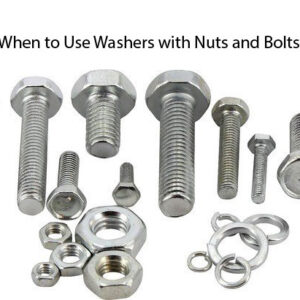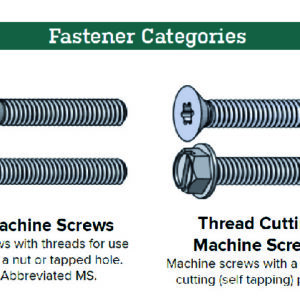How Do Nuts and Bolts Work with Wood – Nuts and bolts play an integral role in woodworking projects, providing reliable and sturdy connections between wood pieces. Understanding how nuts and bolts work with wood is essential for woodworkers looking to create strong and durable structures. In this guide, we will delve into the mechanisms of nuts and bolts, exploring their function and importance in woodworking.
The Mechanics of Nuts and Bolts
Nuts and bolts are threaded fasteners composed of two primary components: the bolt and the nut. The bolt consists of a threaded shaft with a head, while the nut is a small metal piece with a threaded interior. When these two components are joined, they create a secure connection by screwing the bolt into the nut, effectively fastening the wood pieces together.
Selecting the Right Nuts and Bolts
Choosing the correct nuts and bolts is paramount to achieving reliable and sturdy connections. Consider the following factors when selecting your hardware:
- Size and Length: Ensure that the size and length of the bolt are appropriate for the joint you intend to create. The bolt should be long enough to penetrate through the wood pieces and provide enough protrusion for the nut to secure tightly.
- Material: Opt for materials such as stainless steel or brass that offer corrosion resistance – especially for outdoor projects or areas exposed to moisture.
- Thread Type: Match the thread type of the nut and bolt to ensure compatibility. Common thread types include coarse, fine, and metric threads. Select the appropriate thread type based on your project’s requirements.
Drilling Holes for Nuts and Bolts
Preparing the wood for the nuts and bolts involves drilling holes to accommodate the hardware. Follow these steps for successful hole preparation:
- Measurement and Marking: Measure and mark the precise spots where the holes will be drilled. Accuracy is crucial for a secure connection.
- Choosing the Drill Bit: Select a drill bit that matches the diameter of the bolt. A sharp and properly sized drill bit will provide clean and accurate holes.
- Drilling the Holes: Carefully drill the holes to the required depth, ensuring it corresponds to the length of the bolt you will be using.
Installing Nuts and Bolts
Once the holes are drilled, it’s time to install the nuts and bolts:
- Inserting the Bolt: Place the bolt into the hole, aligning it with the other wood piece to be joined.
- Adding the Nut: Slide the nut onto the threaded end of the bolt.
- Tightening the Connection: Begin tightening the nut by hand, turning it clockwise. Gradually increase the tightness using a wrench or pliers until the wood pieces are securely fastened together. Be cautious not to overtighten, as it can damage the wood or strip the threads.
- Consider Additional Components: Depending on the specific application, you may need to include washers or lock nuts to enhance stability and prevent loosening over time.
Understanding how nuts and bolts work with wood is vital for woodworkers aiming to create robust and durable structures. By considering factors such as size and length, material, and thread type, selecting the appropriate nuts and bolts becomes an informed decision. Properly drilling the required holes and following the installation process ensures secure connections. Incorporate this knowledge into your woodworking projects, and you’ll be rewarded with stable and long-lasting creations.




